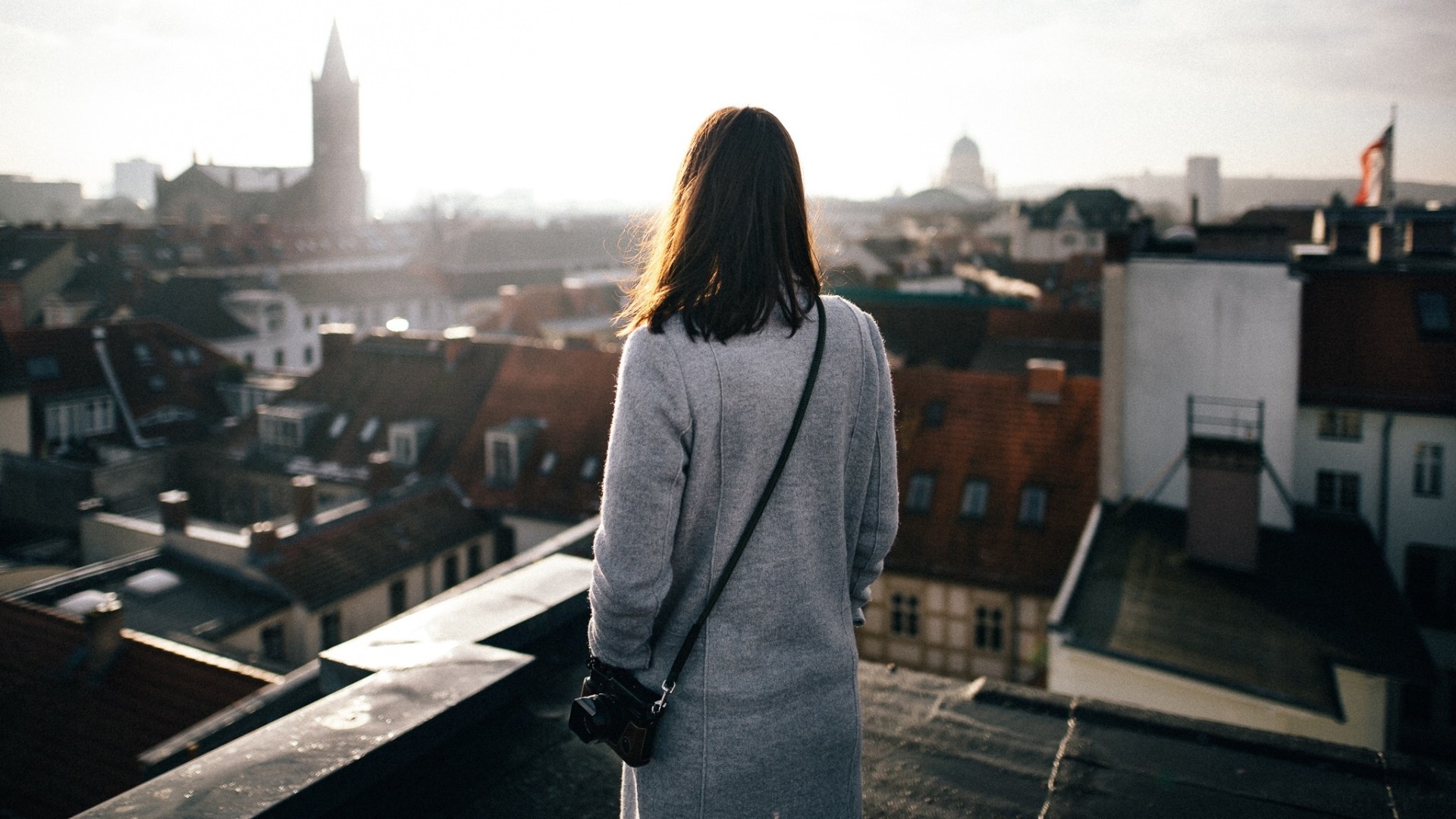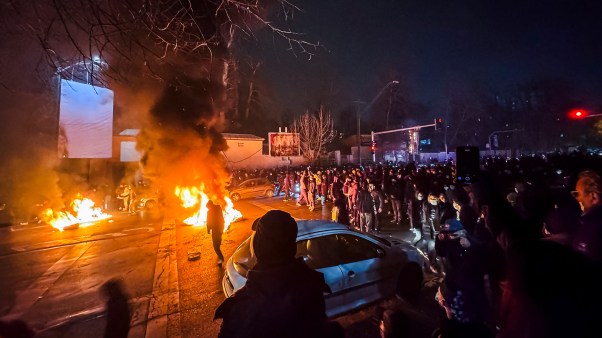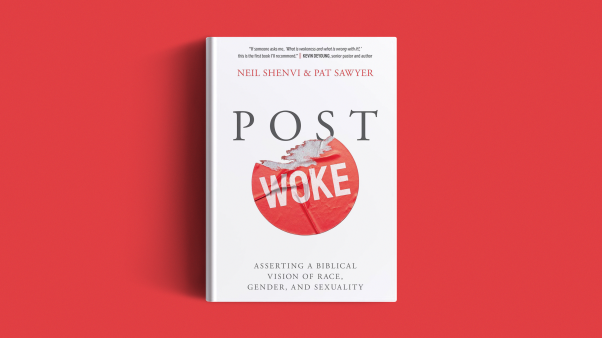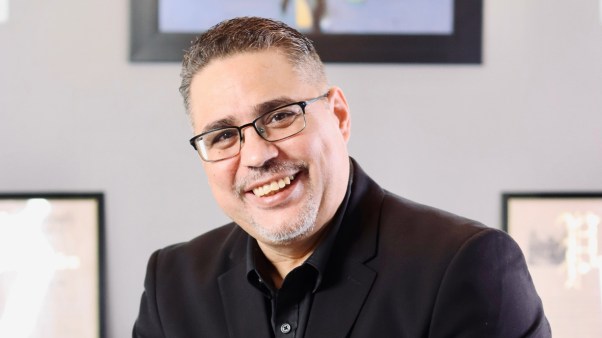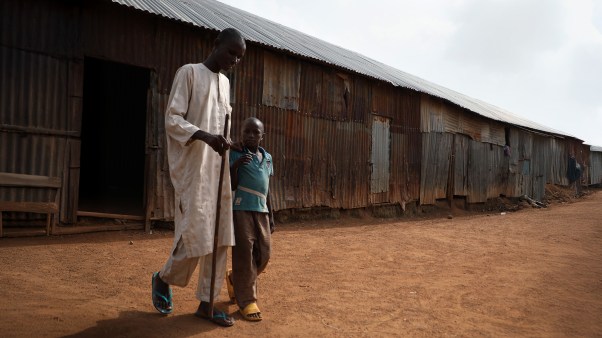On the day the moving truck pulled away, I was the last to leave. The walls were empty except for the black and white stripes we’d painted, and that little spot of white on the turquoise kitchen wall we covered up with a frame (thinking one day we’d get around to fixing it). There was no bump-bump of children running up and down stairs, no circles of noisemaking.
I stepped on the floorboard that always creaks—to hear it one last time. What was once something to fix was now dear.
I ran my fingers along the living room walls. “Thank you,” I said as I touched the walls that had seen so much life and laughter, so many tantrums and tears. “Thank you, thank you, thank you.”
I walked around the room, blessing this house and caressing it like the lips of a lover. I prayed the house would be a sieve where our crazy would get caught and our love would pour out to the next owners, another pastor’s family.
This move from an urban neighborhood in Salt Lake City back home to the suburbs of Southern California was clearly where God was calling us next, but that didn’t prevent the leave-taking from feeling like a kind of death. This was the home we’d known the longest as husband and wife. We brought home half our children to this spot of earth. This was the house with the 15-year renovation dreams attached to it. This was the house with the bookshelves my husband, Bryce, built for me to hold the weight of my years of study.
We were leaving the creaking, 100-year-old floorboards Bryce had refinished to follow God’s call to plant a church in the land of plenty and cookie-cutter tract homes. Roots, when exposed to the light, quiver a little.
Markers of Belonging
At first, I scoffed at the idea of a suburban church plant. I thought I was too good for the suburbs, too good to move back home. If you gave me a life in the city or the country, I could idealize it to death, cover it in metaphors, and figure out what the kingdom of God looked like with art galleries and public transportation or endless space for my children to run.
This move, however, pulled me up short. My self-narrative for the past two decades had revolved around movement and moving place. As a married couple, we had moved eight times and birthed more children than we planned. Now, instead of living a life overseas or in the heart of a bustling city center, we found ourselves moving home—to the suburbs. We would be two miles from the hospital where my husband was born.
Some people crave the rootedness and security of staying put. I have measured my homes away from home as markers of belonging. Each one—Los Angeles, Edinburgh, Los Angeles (again), San Diego, Salt Lake City—was evidence that we were doing significant things for God. From there it was a quick jump to seeing our address as the measure of our worth. For a woman who craved the cultural hub of a city or the idyllic freedom of a rural life, I bristled about a move to the suburbs. I was happy in Salt Lake City. The city was booming: Ski resorts were a short drive away, diversity was increasing as more immigrants moved in, and restaurants with award-winning international cuisines were popping up downtown.
Moving home held out its charms: I was excited about proximity to family, how a newer house meant fewer things falling apart, and how we wouldn’t have to learn a new place. But, I wondered, how would I find belonging in the suburbs where everyone—even their houses—seemed to look the same?
I craved sustainability, depth, meaning, nuance—the things you find in a city, I reasoned, or at least in the type of rural life championed by Wendell Berry. How did this move fit; how could I fit? Underneath my feelings of superiority was a deep fear that I couldn’t cut it: I wasn’t pretty enough or successful enough. Could I find belonging in the suburbs, or would I be a misfit?
I’m comforted by the biblical precedent of God’s people laughing at his plans—backing into corners and running off in the opposite direction. I feel kin to Jonah, thinking he was too good for a place; to Sarah, laughing at the idea that God could do the impossible; to Moses, thinking he didn’t have the right skill set to serve God’s people; to Joshua, who was afraid; to David, who followed his feelings, which led to adultery and murder; to Peter, who said he’d always come through and then ran away; to Paul, who desperately wanted to do everything right. The list goes on. In each story, God leads these wayward souls to repentance and restores them to fellowship. So I took a deep breath, said goodbye, and closed the door to our life in Salt Lake City. This was it—we were moving to the suburbs.
Stories of the Good Life
In what they center and in what they hide, all places tell stories through their geography, architecture, and overall design. After World War II, suburbs popped up across America. They were places upwardly mobile middle-class residents would retreat to for their version of a country manor house placed at a reasonable distance away from the city, where (usually) men worked.
Houses became status markers. Cars and commuting became more prevalent. Women increasingly stayed home, removed from the bustle of city life. As suburbs grew, they became whiter and richer. Their racial, ethnic, and socioeconomic diversity wasn’t just lowered; according to Becky Nicolaides and Andrew Wiese, editors of The Suburb Reader, the suburbs “built inequality to last.”
Today, each suburb is different: Some are receiving previous urban dwellers who can’t afford city life when they have a family; others are the result of “white flight”; still others are more affluent and cost-prohibitive than the cities they orbit. Many are growing in their racial, political, and socioeconomic diversity.
But each suburb, in its own way, evangelizes for the good life: a life of safety, beauty, comfort, and ease. In their layout, their laws, and their cultural contours, suburbs—like all places—reflect both our good, God-given desires to create home and the beauty and brokenness of a place.
Thankfully, the good news of the gospel is never defined by a ZIP code. The gospel story helps us see the idols of our suburbs and brings hope for an abundant life not contingent on our circumstances.
Our places are good gifts; home is how we begin to know who we are. Yet when we use the gifts of our places—when we use the suburbs—as “ultimate things,” like pastor Tim Keller is fond of saying, we worship them.
The call upon all of us in the suburbs is to find belonging not in what we buy or how we present ourselves, but in loving God and neighbor. If God is our host who prepares a table for us and the bread of life we feast on, then he is intimately concerned with our hungers. He’s concerned about meeting our physical and existential rumblings.
The thing about hungers is that they are all best met in God alone. The story of God’s kingdom is not about a bigger house, more resources (even to give away), security, safety, or the next promotion. No, the story of the Bible is that we have a Father God who meets us in our lostness, in whatever form that takes.
Our souls can suffer when we sleep on featherbeds, eat rich food, and always have the financial means to fill our needs. As people on the Way, we must practice the discipline of being curious about our small hunger pains. Not until we feel our hunger can we be propelled toward repentance, vulnerability, welcome, and belonging.
Feeling our hunger is the first step toward remembering who we are. We need a story to find home in the suburbs. Indeed, as Albert Hsu writes in The Suburban Christian, “God needs suburban Christians who are willing to take a sharp look at their environment, recognize the challenges of the suburban setting, and then stay here to do something about it.”
Finding Our Place
It’s been three years since the moving truck pulled away. There are things still out of place, and we still ache to belong—to have answers to all the niggling questions about what it looks like to plant new roots into the soil of the suburbs. We take comfort in our smallness.
So we also start small; we move our bodies. My husband is downstairs building cabinets in the laundry room so we have somewhere to put our laundry detergent. We walk our children to the local elementary school. I still walk the hills around my suburban tract home, to ground myself and learn to love the particularities of my place. Now, life has settled into some sort of suburban rhythm. I know faces and names, and I’m welcomed into the holy spaces of burden-bearing for neighbors and church members: where we gather and eat, where we worship, where we walk, where we practice being good neighbors.
I still scroll through Instagram to see pictures of what we left, and I still wonder how to make a home here—one that is robust, imaginative, and meaningful. I want to welcome my children and neighborhood into a spaciousness of soul that’s not contingent on a number from a bathroom scale or a test or a bank statement. I’m convinced we don’t need acres of farmland or the cultural cachet of a city to get there. All places can be holy ground when we choose to pay close attention to the ways God is already at work.
So we open our hands, we get moving on our walking paths, we make room, and we welcome people into the feast of belovedness. As individuals, families, and churches commit to love and sacrifice for our neighborhoods and subdivisions, we will find our place. God has made us hungry people, and our hungers are best met through him.
Ashley Hales is a writer living in Southern California. This article is adapted from her book, Finding Holy in the Suburbs: Living Faithfully in the Land of Too Much (InterVarsity Press). Copyright (c) 2018 by Ashley Hales. Used by permission of InterVarsity Press, P.O. Box 1400, Downers Grove, IL 60515. www.ivpress.com

